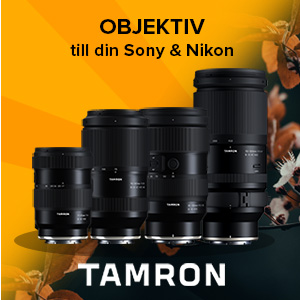Tamron
AF: Auto-Focus.
XR: Extra Refractive Index glass (smaller and lighter lenses).
LD: Low Dispersion (reduce the chromatic aberrations).
XLD: Extra Low Dispersion (reduce the chromatic aberrations.. more).
ASL: ASphericaL (better convergence of the focal plan).
LAH: LD + ASL (hybrid lens element).
AD: Anomalous Dispersion (better control of the chromatic aberrations).
ADH: AD + ASL (hybrid lens element).
HID: High Index, High Dispersion Glass (control of the lateral chromatic aberrations).
VC: Vibration Compensation.
USD: Ultrasonic Silent Drive.
PZD: PieZo Drive.
SP: Super Performance (professional lens).
IF: Internal Focusing System.
Di: Digitally Integrated (for FX camera). Fungerar även på DX
Di-II: Digitally Integrated (for DX camera).
ZL: Zoom Lock.
A/M: Auto-focus/Manual-focus.
FEC: Filter Effect Control (control the filter orientation with the hood attached).
1:1 Macro: 1:1 Magnification.
Sigma
DG – lenses compatible with FX sensor DSLR cameras. Fungerar även på DX
DC – lenses designed for for DX DLSR cameras.
DN – lenses designed for compact system cameras. Sigma is yet to release lenses for full-frame mirrorless cameras (the Sony duo), so it is yet unclear if such optics will have a designation of their own (quite likely), or belong to either DN or DG series.
HSM – the Hyper Sonic Motor is Sigma’s equivalent to Canon USM and Nikon SWM technology. It is a ring-type ultrasonic motor designed to provide quick and silent focusing.
OS – optical image stabilization technology used in Sigma lenses; similar to Canon IS, Nikon VR and Tamron VC.
ASP (Aspherical) – lenses with this designation have aspherical glass elements in their optical design.
APO (Apochromatic) – apochromatic lenses are designed to correct chromatic and other sorts of aberrations more effectively. Truly apochromatic lenses feature exotic fluorite elements and have no chromatic aberrations at all. According to Sigma, their APO lenses “are telephoto and telezoom type lenses which use special optical designs and optical materials (SLD or ELD glass) to improve their performance. The result is images which have greater contrast, sharpness and color definition than a comparable non-APO type lens .”
RF – such lenses have rear focusing design, which means that during focusing operation only a few elements positioned behind the diaphragm blades are moved (rather than all the elements). This results in potentially faster AF operation and non-rotating front elements.
IF – internal focusing is similar to RF, but in this case several optical elements in front of the diaphragm are moved during focusing (rather than all the elements). The size of the lens remains constant, but the focal length might change slightly as you focus.
SLD – Special Low Dispersion glass elements are designed to minimize chromatic aberrations.
ELD – Extraordinary Low Dispersion glass elements might have a slightly funny name, but they should perform even better than SLD.
FLD – F Low Dispersion element, at least according to Sigma, is “the highest level low dispersion glass available with extremely high light transmission.” It should basically perform as well as fluorite elements (that is what the “F” stands for), but is far less expensive.
TSC – Thermally Stable Composite is a special material that blends qualities of polycarbonate and metal and is used in the construction of some lenses. According to Sigma, it “offers 25% greater elasticity than polycarbonate. Since its thermal shrinkage is low, TSC matches well with metal parts, further contributing to the high-precision construction of the lens.”







